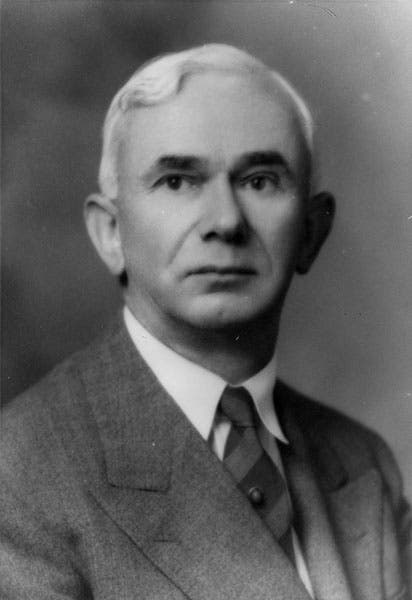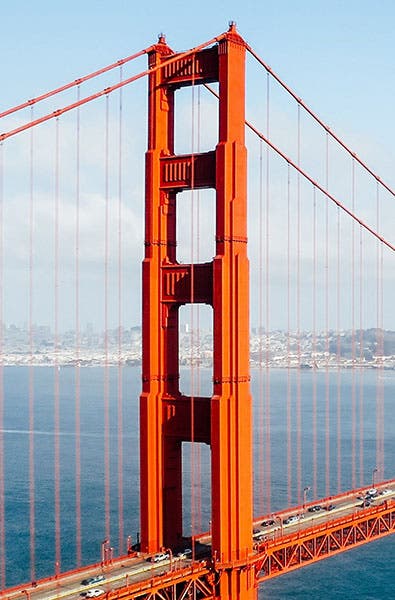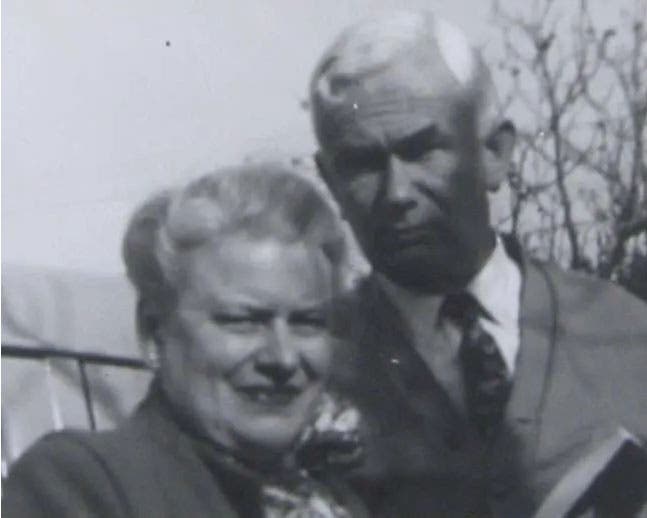Scientist of the Day - Irving Morrow
Irving F. Morrow, an American architect, was born Oct. 28, 1884. Morrow was primarily responsible for what you like when you look at the Golden Gate Bridge in San Francisco. Assigning credit for various aspects of the Golden Gate Bridge is a difficult and sometimes contentious matter, especially since the Chief Engineer, Joseph Strauss, did his best to grab all the credit for himself. Strauss does deserve a great deal of credit for the bridge – he got the thing built, an incredibly difficult and often thankless task. But there is no doubt that Strauss had very little to do with the structural design of the final bridge, or with its aesthetics. He hired three consulting engineers: Charles Alton Ellis, Leon Moissieff, and Charles Derleth, and it is generally agreed that Ellis and Moissieff were primarily responsible for all the calculations needed to work out the stresses on the span, and for the design of the suspension system, with Ellis getting the lion's share of the accolades. So when you admire the Golden Gate Bridge from a distance, it is Ellis and Moissieff whom you have to thank.
But when it comes to the slim, graceful towers and their Art Deco elements, we have to re-direct our applause to the two consulting architects, John Eberson and Irving Morrow. Towers for suspension bridges had changed dramatically since the Brooklyn Bridge opened in 1883. Engineers in the 1920s discovered that, with new materials, towers could be made lighter and more attractive, and much of the cross-bracing could be omitted. The George Washington Bridge (GWB), then under construction, carried on the tradition of massive steel towers, although the designers declined to face the steel with stone. But while the GWB was being built, some bridge engineers, such as Moissieff and Ralph Modjeski, were redesigning suspension bridge towers, as we see with the Benjamin Franklin Bridge in Philadelphia, engineered by these two and opened in 1926. I don't think anyone would call the towers slim and elegant, but they are attractive, and they give a certain lightness to the Ben Franklin bridge that is missing from the older suspension bridges.
Of the two consulting architects on the Golden Gate Bridge, Eberson had greater prestige and reputation. He was the master of the atmospheric movie house, building hundreds of them around the world between 1905 and 1940. Strauss chose him in 1929 to add some style to the ungainly towers that his engineers had given him. It seems to have been Eberson who with Ellis chose to remove some of the cross-bracing, leaving openings where before there had been braces. He also seems to have chosen an Art Deco style for the towers, and opted for a stepping-back of the stages of the towers, one of the bridge’s most attractive features. But his proposed towers still lacked grace, primarily because some of the openings were clogged with parabolic arches. This is where Morrow came in.
Unlike everyone else on the project, Morrow was a local consultant, having designed a variety of buildings around San Francisco, but with no experience at bridges. Strauss seems to have added him to the team in 1930 to improve relationships with the San Francisco business community. But Morrow came highly recommended, and it turned out that he just what Strauss needed, an inspired "eye." He knew and loved the Golden Gate entrance to the bay and had definite ideas as to how a span across that entrance should look. As soon as he was hired, he started sketching his ideas in charcoal, drawings that still exist (although they seem to be nowhere online), and in these drawings one can see the existing bridge emerge. Morrow squared off the openings in the towers, leaving the art deco elements in the corners, and he graduated the openings, so they got smaller as they went up, a feature that really makes the towers soar. He was also wise in the ways of reflected sunlight, and he added vertical fluting to the towers to enrich the light patterns (fourth image, above).
Morrow was also responsible for the artificial lighting on the bridge. He wanted it to be soft, and uneven, so that the towers rose from light into darkness. Low pressure sodium lamps were new then, and Morrow chose them for the roadway (although his lighting system would not be installed until much later, as there was no money left when the bridge was completed in 1937). He also disentangled the complicated roadway railings that the engineers had envisioned, opening the railings up so that passengers in cars had a near-unobstructed view of the bay, and pedestrians enjoyed a more open feel as they walked across.
Some think Morrow's greatest contribution to the Golden Gate Bridge was the color. It was traditional for metal bridges to be painted gray, although silver was becoming an option. The structural steel for the Golden Gate Bridge was delivered with a red-lead primer, and Morrow thought it fit in perfectly with the blue of the bay and the green and brown of the hills. Almost no one agreed with him, but he persisted in his advocacy for an orange paint, and he managed to find a manufacturer who could supply such a paint with appropriate sea-salt-resistant properties. Eventually the critics gave way, and the bridge was painted in a shade known as International Orange. Now, no one can imagine the Golden Gate Bridge in any other color.
There are only two photos of Morrow that I could find online, one a posed portrait (second image), and the other with his architect-wife Gertrude (sixth image). So his principal visual legacy has to be the Bridge. That’s not bad, at all. The rest of us should be so lucky.
Dr. William B. Ashworth, Jr., Consultant for the History of Science, Linda Hall Library and Associate Professor emeritus, Department of History, University of Missouri-Kansas City. Comments or corrections are welcome; please direct to ashworthw@umkc.edu.








![“Aurora Borealis,” hand-colored wood engraving by Josiah Wood Whymper, [Natural Phenomena], plate 2, 1846 (Linda Hall Library)](https://assets-us-01.kc-usercontent.com:443/9dd25524-761a-000d-d79f-86a5086d4774/0245ffcb-b70c-477c-8792-0a73ebd54eb2/Whymper%2011.jpg?w=210&h=210&auto=format&fit=crop)


